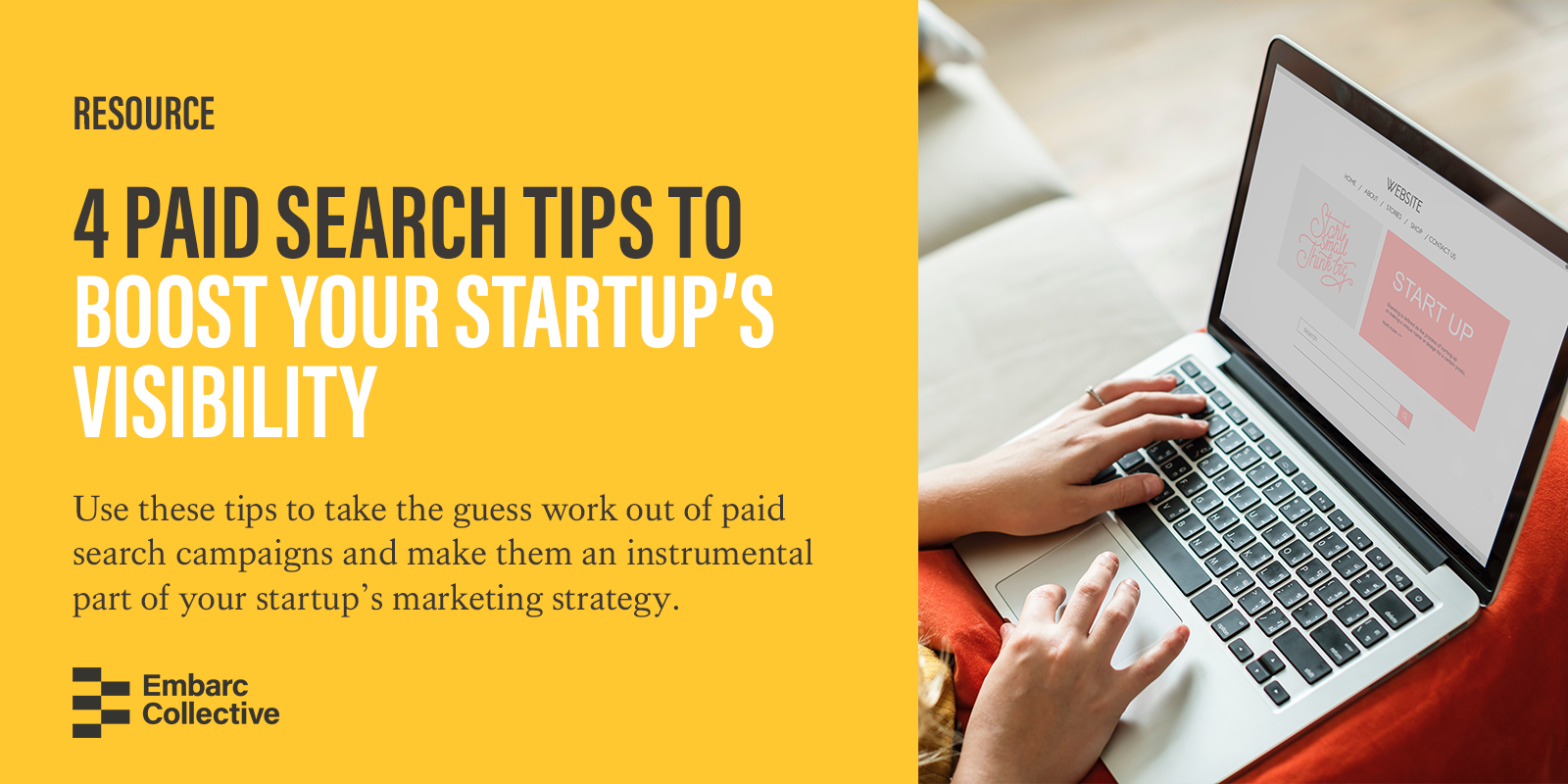Perhaps you have already launched a few paid search campaigns, crossing your fingers your startup will hit the highly-coveted first or second spot on a search result page. But achieving paid search success through Google Ads or Bing Ads isn’t a matter of luck – even though it might feel like it when you launch your first couple of campaigns.
Read the four tips below to take the guesswork out of paid search campaigns and make them an instrumental part of your startup’s marketing strategy.
1) Start with Compelling Copy
If you’re not excited about the words describing your product, service or startup, how can you expect potential customers to be? Your ad copy should be compelling while also including at least one keyword. Keeping your message short and simple is really your only option because of character limits, so each word should count. Let readers know why your product or service beats the competition. Don’t forget a specific Call-to-Action (CTA) encouraging the reader to fill out a form, order now, download a guide or complete another measurable action.
Bonus Tip: Google will reject ads using copy that doesn’t adhere to editorial guidelines and spelling requirements. For example, “buy flowers” would probably be acceptable, but Google would most likely reject “buy f l o w e r s.” See more information on Google’s advertising policies here.
2) Use Your Own Audience Data to Increase Return
In today’s world of “big data,” advertisers pay big bucks to use collected cookie data to target audiences based on their online behavior and interests. But many startups and corporations forget they already have the relevant information to target some of the best potential customers by utilizing their own website visit data, email database and more.

By setting up these audiences with Remarketing Lists for Search Ads (RLSA), you’re able to optimize bids for those users who have already shown intent, and therefore are more likely to convert.
Bonus Tip: You can take you current audience data and turn it into similar audiences. A similar audiences list is created from a remarketing list with at least 1,000 cookies with enough similarity in search behavior to create a corresponding similar audience. Learn more about it here.
3) Implement Effective Ad Extensions
Make your ad really shine on Google with Ad Extensions. With 10 extension types now available, there are more ways than ever to enhance your standard ad copy and provide more information about your products or services. Ad extensions can make ad copy more prominent, feature reviews, offer click-to-call and click-to-text options and more.
A lot of people just add a few quick sitelink extensions and call it a day, but that’s like having access to a whole toolbox to build a house and only using the hammer. Ad Extensions also increase the size of your ad, which helps increase your Click Through Rate (CTR), while potentially pushing competitors lower on the search engine results page.
4) Uncover New Opportunities in Search Query Data
About 15 percent of Google search queries have never been seen by the search engine. It’s not mathematically possible to have every keyword variation included in your campaign. That’s why search query/term review should be the number-one routine optimization you should be completing.
Since there are so many potential search query variations, using Broad and Phrase match keywords help to catch those long-tail keywords. Unless these are added to the campaign, you’ll never be able to optimize your bids for the search queries that are actually converting. It’s essential to use a multiple match strategy (Broad, Phrase, Exact) to ensure you have complete coverage.
Bonus Tip: In addition to using Broad, Phrase, Exact phrase matching, you should be filtering out irrelevant search queries by adding negative keywords. This prevents your campaigns from getting unwanted clicks.
Like most online marketing tools and strategies, running paid search campaigns comes with a learning curve. And with over half of all Internet ad spend coming from paid search, most businesses have at least dabbled in the practice. By using the tips above, plus constantly documenting and tweaking your strategy, you can go beyond dabbling and confidently launch paid ads that get better results than your competition.
This guest post is based off an original article from our Bayshore Solutions partner.




